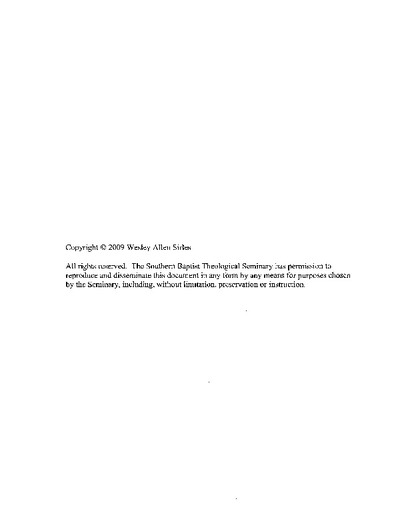| dc.description.abstract | The assumption of the current study is that ongoing church attendance is a foundational component of the quest for genuine discipleship in young people. Chapter 1 examines the problem of the exodus of youth from the church and defines the critical terms for this study. The research questions used to guide the study are introduced.
The purpose of this study was to use Wesley Black's Lasting Faith Scale (LFS) to compare the lasting faith tendency of youth (reflected by their LFS scores) with what their youth ministers believed would be their groups' LFS scores. LFS responses were also evaluated for the effects on scores of the four domains of influence.
Chapter 2 reviews existing literature pertinent to this study. The issues that have been explored are the biblical basis for church attendance, the period of adolescence, spiritual influences of adolescents and young adults, and youth ministry models proposed to better address the issue of genuine discipleship.
Chapter 3 describes the process by which data for this study was gathered. All full-time youth ministers in Southern Baptist Convention churches in Kentucky and South Carolina were invited to participate in the LFS survey and to elicit the involvement of their students.
Chapter 4 reports on the analysis of the data from the completed surveys. Results were analyzed concerning the significance on scores of the four domains of influence (discipleship and spiritual depth; family influence; mentoring and intergenerational influences; and peer influences). Youth ministers' scores (predictive of their students' scores) and student scores were compared. Finally, the effects of significant demographic items relating to students' family life and their identification with Jesus Christ were examined.
The final chapter presents the researcher's conclusions based on the findings of this study. All four of the domains of influence had a strongly significant relationship with students' lasting faith tendency. Youth ministers scored significantly lower on the LFS than the students. The possible reasons for this variance are explored. The strong variance shown in student responses according to the significant demographic groupings are also examined. Based on the results of this research, applications are made for the practice of youth ministry in local churches. Suggestions for further research are offered. | en_US |

